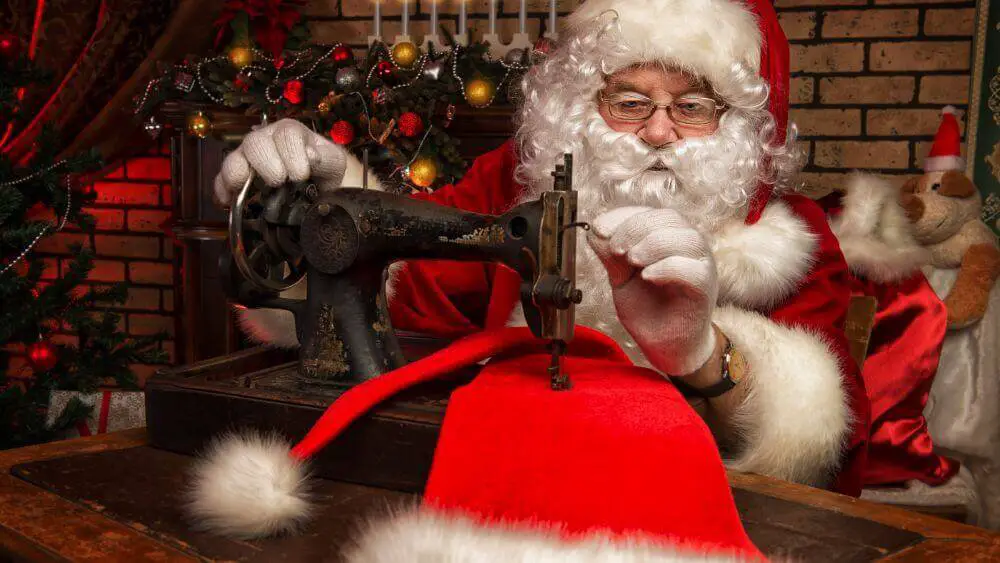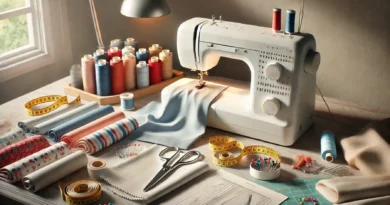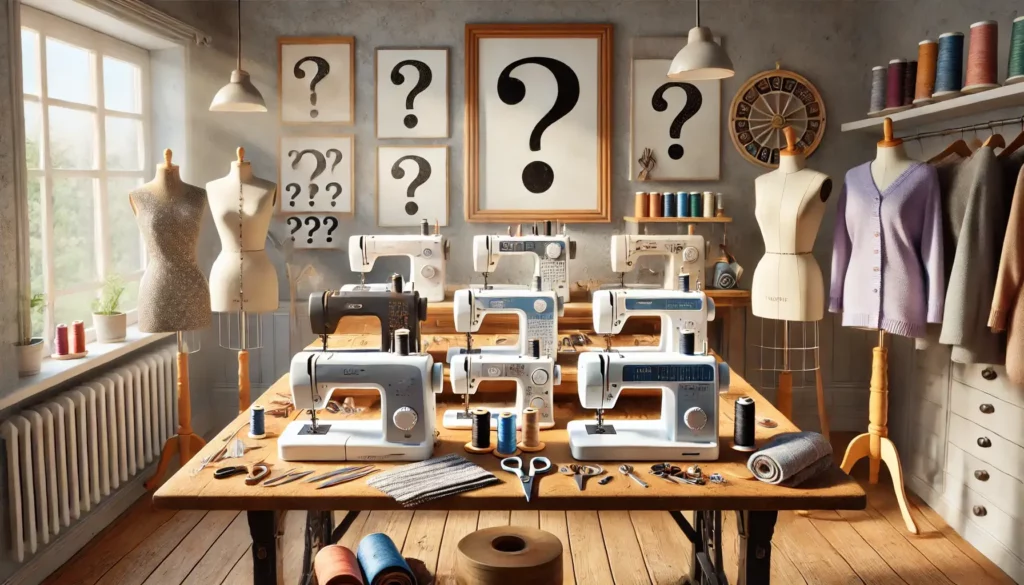
Find your ideal sewing machine: The ultimate guide
When you start sewing, choosing your first sewing machine can quickly become a headache.
With hundreds of models available, technical specifications that seem incomprehensible, and reviews that are often biased, it’s easy to feel overwhelmed.
Should you opt for a basic machine or invest in a more sophisticated model? How do you know if it will be suitable for your projects? Above all, how can you avoid regretting your purchase after just a few weeks of use?
In this article, we’ll answer all these questions and guide you step-by-step to choosing the perfect sewing machine for you, without frustration or unpleasant surprises.
Define your needs
Before embarking on the purchase of your first sewing machine, it’s crucial to take a step back and properly identify your needs. The key is to know exactly what kind of sewing you want to do, and how often.
You don’t need the most powerful machine if you only do occasional projects. So, before you even think about the budget, ask yourself the right questions:
- What sewing experience do you have?
Are you a complete beginner, an occasional seamstress or already an enthusiast with a few projects under your belt? Your level directly influences the features you’ll be looking for. - What types of projects do you make?
Do you like to sew garments, accessories, homewares, or maybe even heavy fabrics like denim or leather? Each project requires different skills and, sometimes, different stitches. - How often do you sew?
An entry-level machine may be sufficient for occasional sewing. But for daily use, it’s best to opt for a sturdy, durable machine that will be with you for the long haul.
By answering these questions, you can already eliminate certain machine models and concentrate on those that really fit your profile. Whether you’re a beginner or an enthusiast looking to perfect your skills, understanding your needs is the first step in avoiding choosing a machine that will end up forgotten at the back of the cupboard!
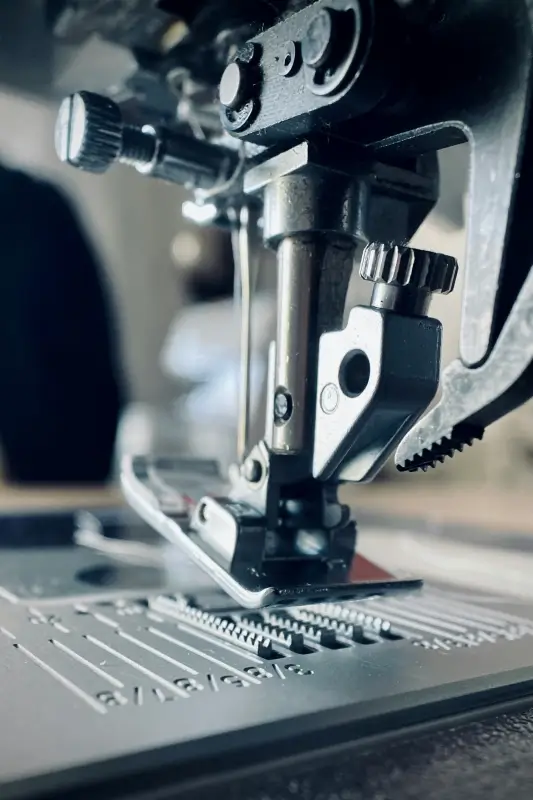
If you’ve never sewn before, how do you know what you want to do?
If you’re completely new to sewing, choosing the right sewing machine can be even more difficult. How do you know what you need if you’ve never used a machine before?
It’s a question many beginners ask themselves, and a legitimate one! The very idea of projecting yourself into future projects can seem daunting when you’re just discovering the world of sewing.
In that case, here are a few tips to help you make your choice without stress:
- Opt for versatility. Your first sewing machine should be versatile enough to let you try out different types of projects. Whether you want to make simple garments, accessories or even repairs, it should be equipped with the basic stitches (straight stitch, zigzag, buttonholes). And offer a certain flexibility in settings.
- Start simple, but not too basic. Don’t be tempted by the ultra-cheap entry-level machines that quickly limit your options as you progress. A slightly more powerful machine will enable you to familiarize yourself with various techniques and avoid having to replace it too quickly.
- Think upgradeable: A sewing machine that can grow with you is an excellent investment. Look for a machine that lets you add extra presser feet or access more specialized stitches if you’re passionate about a particular area (like embroidery, quilting, or sewing stretch fabrics).
- Give yourself time to discover. It’s also normal not to know exactly what you want to do at first. First projects are often trials, and it’s through practice that you’ll discover which techniques really excite you. Choosing an adaptable sewing machine lets you turn this uncertainty into creativity.
In short, choosing your first sewing machine without experience requires flexibility and a little forethought. A machine that’s too basic may limit your progress, while one that’s too complex may discourage you. The aim is to find a balance, a machine that allows you to explore without feeling restricted.
Don’t worry, later in this article we’ll take a look at which machines might be right for you.
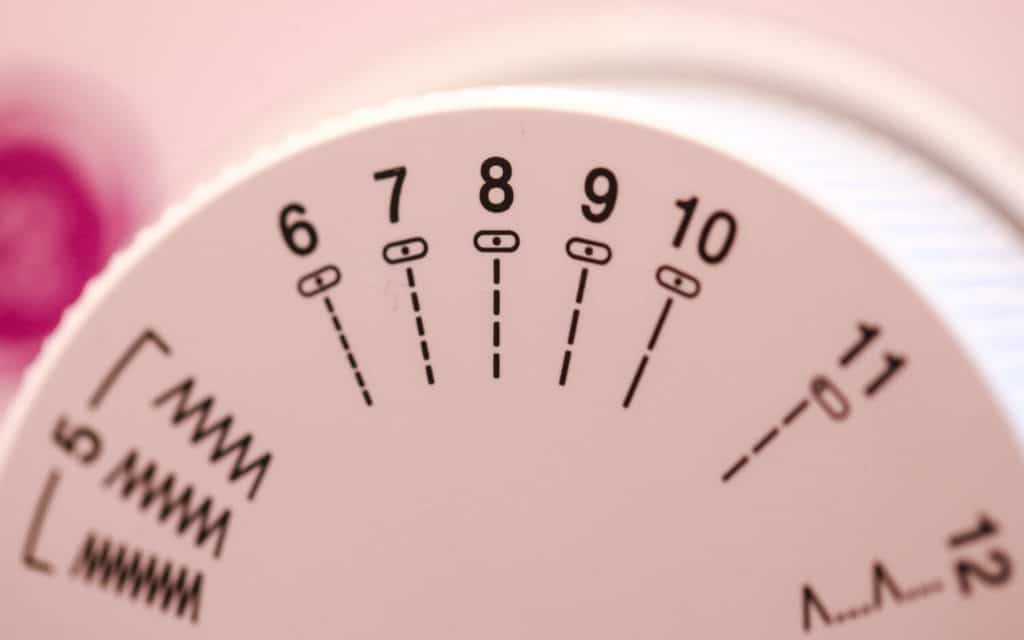
Essential features not to be overlooked on a sewing machine
When you’re in the market for a new sewing machine, certain features are absolutely essential to guarantee a good sewing experience. These features will make all the difference to your comfort and progress. Here’s what you need to check first:
1. Thread tension adjustment
Adjusting thread tension is crucial to achieving clean, strong seams. A machine that allows you to adjust the tension of the upper thread and bobbin gives you total control over the quality of your stitches, avoiding loops or broken threads. This is a must-have feature, especially if you’re sewing fabrics of different thicknesses.
2. Adjustable stitch length and width
Being able to adjust stitch length and width is essential for adapting to different types of project. Stitch length is particularly useful for sewing precise curves or delicate fabrics, while stitch width is essential for finishes such as zigzag stitch or decorative stitches. Make sure your machine offers this flexibility.
3. Basic points
All sewing machines have a certain number of standard stitches, but some offer additional stitches that can make your life easier:
- Straight stitch and zigzag stitch are the two essentials for most projects.
- The stretch or overlock stitch is perfect for stretch fabrics if you don’t have a serger.
Decorative stitches on some sewing machines may seem tempting, but they’re often more of a marketing ploy than a real necessity. Most sewers rarely use them after the initial excitement, as they are not essential for everyday projects. In reality, these fancy stitches don’t justify the extra cost on a sewing machine. Better to concentrate on reliable basic stitches and practical features that will really enhance your sewing experience!
4. Automatic buttonhole
If you plan to sew garments regularly, the automatic buttonhole function is a real time-saver. It creates perfect buttonholes in a single step, without having to manually adjust each part of the buttonhole. A feature that quickly becomes indispensable as soon as you tackle shirts or jackets!
5. The visible, horizontal bobbin
A visible bobbin makes it easy to check the amount of thread remaining, avoiding seams interrupted by an empty bobbin. Machines with a horizontal bobbin and transparent cover are often more practical, especially for beginners.
6. Double drive
Double feed (or double conveyor) is particularly useful for sewing thick or slippery fabrics such as leather, denim or satin. It allows the two layers of fabric to be fed evenly, without staggering. A real plus for those who want to work on a wide range of materials without stress.
7. Presser foot and adjustable pressure
Some projects require different presser foot pressure depending on the thickness or nature of the fabric. Having the ability to adjust this pressure is essential to prevent the fabric from moving or slipping, especially with thin or thick fabrics. An adjustable presser foot is therefore a criterion not to be overlooked if you plan to sew a variety of fabrics.
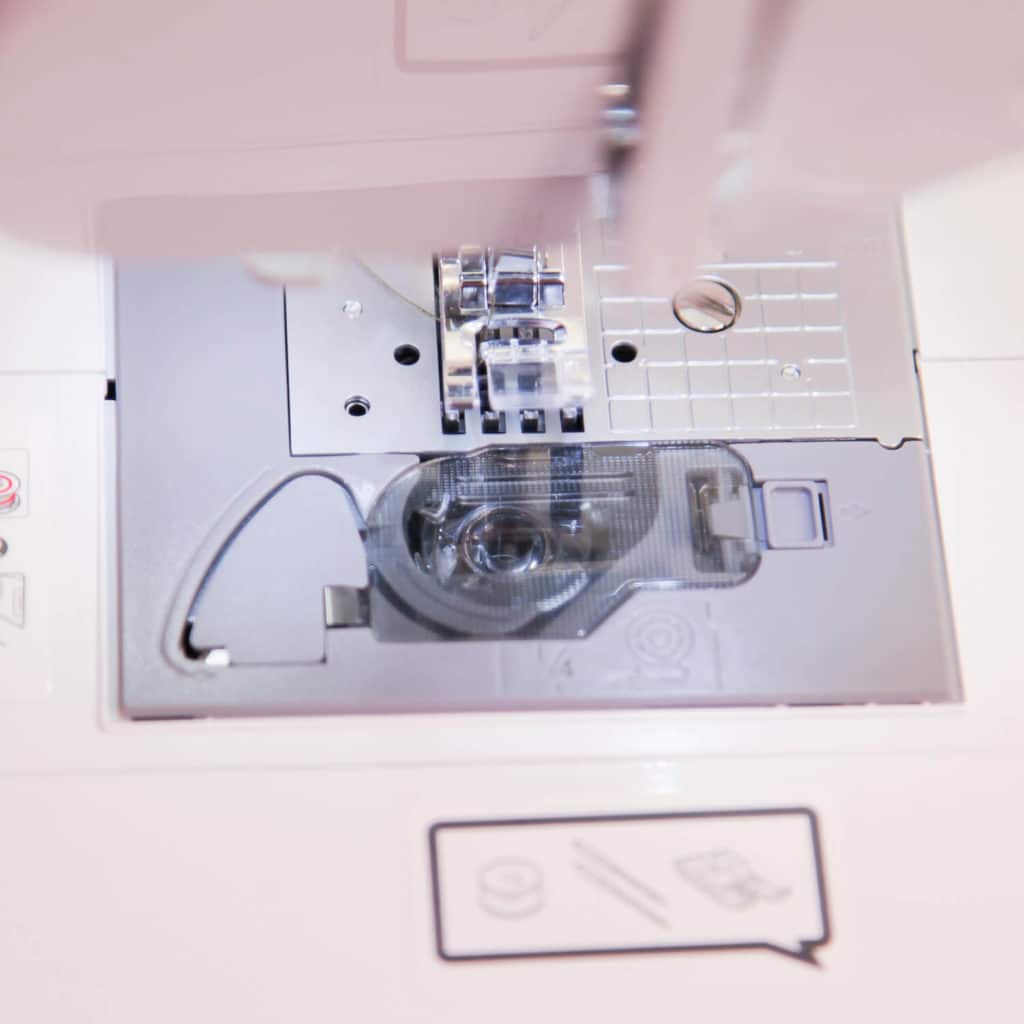
Chapter 4: Practical but not essential gadgets
When exploring the features of sewing machines, it’s easy to be drawn to certain gadgets that seem to promise a smoother sewing experience. However, not all of these additions are necessarily essential, and many can be perceived as extras that inflate the price without really changing your daily routine. Here’s a list of gadgets that, while practical, aren’t essential for everyone.
1. Automatic thread cutter
The automatic thread trimmer is a gadget often touted for saving time at the end of each seam. While it’s handy, especially for long projects, it’s far from indispensable. You can easily do without it, and in the event of a problem (such as fine threads getting tangled), it can even become a source of frustration. What’s more, it’s one of the functions that tends to break down quickly.
2. Bobbin end sensor
Some machines emit an audible signal when the bobbin is almost empty. This may seem useful, but in reality it’s often more convenient to simply check the thread level visually, especially with a visible bobbin. All the more so as the sensor can be triggered long before the actual end of the bobbin, which can become annoying in the long run.
3. Automatic threading
If you have trouble threading the needle, automatic threading may seem like a minor miracle. However, it doesn’t always work well with all needle sizes, and it may take several tries to get the thread to pass through the needle correctly. Although it can be a time-saver, the manual method is often just as effective for the majority of projects.
4. The extension table
For those working on large pieces (such as curtains or coats), an extension table can offer extra support. But for smaller or everyday projects, it’s not necessary. If you’re short of space in your sewing corner, this gadget quickly becomes cumbersome and often ends up at the back of the closet.
5. Knee brace
The knee lever, used to lift the presser foot with the knee, can be interesting for those working on complex projects, where the hands are constantly busy. However, this function is far from essential for the majority of sewers. If you’re working on simpler or medium-sized projects, you can easily do without this gadget.
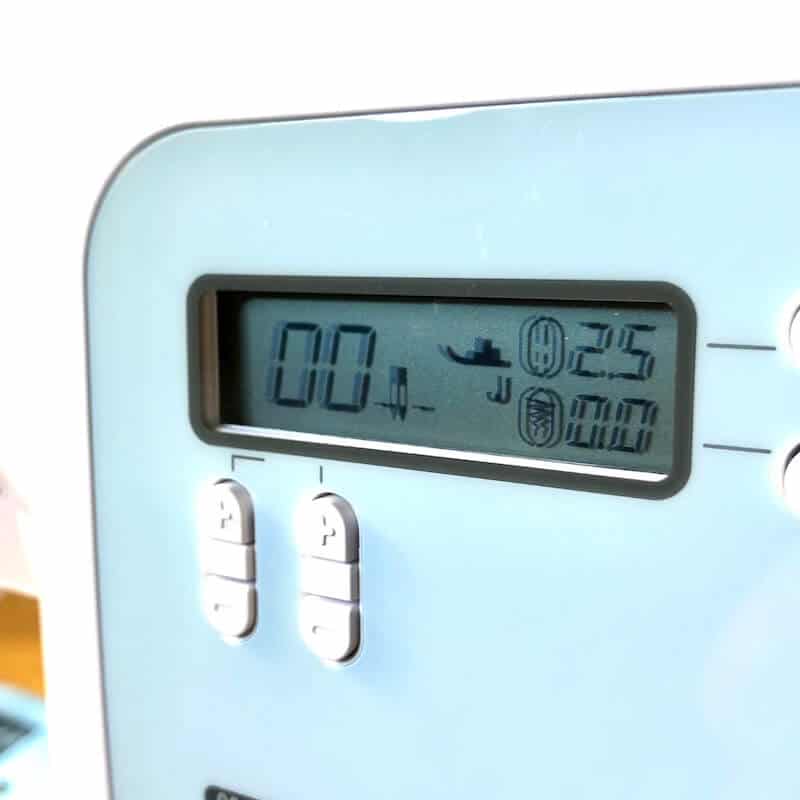
Understanding the different sewing machine ranges
The world of sewing machines can seem daunting, with its many options ranging from inexpensive models to semi-professional machines. First of all, you’ll need to understand the different ranges to make an informed choice according to your needs and, above all, your budget.
Each price range brings specific features and performances that deserve to be evaluated.
1. Low-end machines (< €300)
Entry-level sewing machines, often offered at attractive prices in non-specialized stores, are ideal for beginners who want to get started without investing too much. They are suitable for simple projects such as touch-ups, cushions or basic garments. However, they quickly show their limits if you plan to work on thick fabrics or complex projects.
- Advantages: Affordable, lightweight and easy to store.
- Disadvantages: Not very robust, few advanced features, can wear out quickly.
2. Entry-level machines (€300 – €500)
These machines are an excellent compromise for designers who want a little more flexibility without blowing their budget. They are more robust and often offer additional functions. These include stitch length and width adjustment, and even automatic buttonholes. You can work on a variety of fabrics with greater comfort.
- Benefits: Versatile functionality, better durability than low-cost models.
- Disadvantages: They remain limited for very advanced projects or complex fabrics.
3. Mid-range machines (€500 – €1000)
This category is ideal for serious amateur sewers or enthusiasts who want to improve their skills. These machines generally offer more stitches, better fabric thickness management, and sometimes features such as double feed or toggle. What’s more, they are designed to last longer with frequent use.
- Advantages: More versatile, robust, suitable for complex projects and frequent use.
- Disadvantages: A more substantial investment, but justified if you sew regularly.
4. Top-of-the-range machines (> €1000)
Top-of-the-range sewing machines are aimed at experienced or semi-professional sewers looking for optimum performance. They often include practical gadgets (such as automatic thread-cutting or automatic threading). As well as a multitude of specialized stitches and advanced customization options. These machines are capable of handling demanding projects with a variety of materials, from thick to delicate fabrics.
- Advantages: Outstanding performance, numerous customization options, great durability.
- Disadvantages: High price, often heavier and more cumbersome.
5. Semi-professional machines
For those who want to take their skills to the next level, or who plan to make a career of it, semi-professional machines offer the robustness and functionality of professional machines. But adapted for home use! They are ideal for bulky projects or highly technical fabrics.
- Advantages: High performance, perfect for intensive use.
- Disadvantages: Bulky and very expensive, often oversized for occasional use.
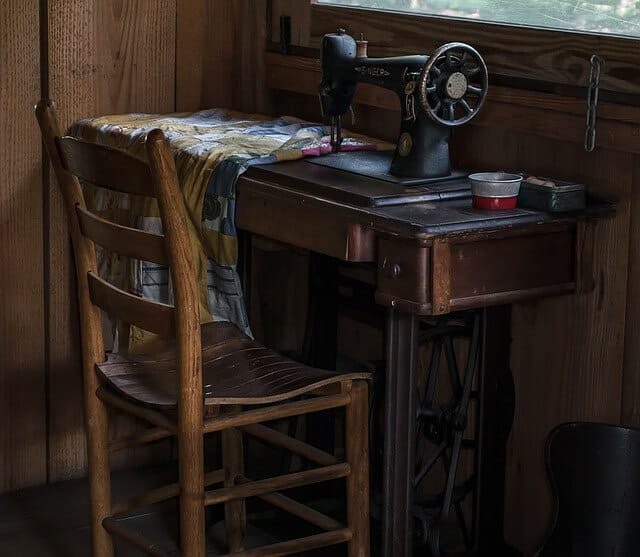
My top sewing machines, according to your budget
Now that you have a better understanding of sewing machine ranges and which features to prioritize, it’s time to present my top 3 best sewing machines for every budget.
Here are machines that combine performance, durability, and value for your money:
Low-budget machines (under €300)
- Lidl Silvercrest at around €100
- The Brother FS40s (which I’m testing here) will cost you 200€.
- The Elna eXplore 160, at €299
Mid-range machines (€300 to €700)
- The Bernette b05 Academy, at 399€, which I test in this video
- The Brother Innovis A65, which costs €560
- The Elna eXperience 550, for €699
High-end machines (over €700)
- The Elna eXperience 570 Alpha at €869
- The Bernina 325 at €1199
- The Elna eXpressive 850, at just €2,629!
At the end of the day, choosing the right sewing machine is essential to enjoy sewing to the full and evolve without frustration. By taking into account your needs, budget and essential features, you’ll find THE machine that will accompany you in all your creative projects!
Bonne Couture!


